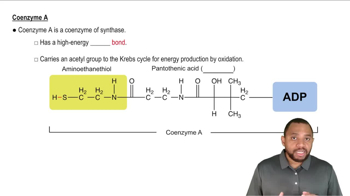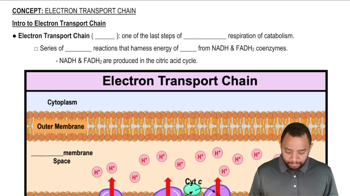Multiple Choice
FADH2 can be oxidized at both complex I and II in the inner membrane of mitochondria. (T/F)
1059
views
 Verified step by step guidance
Verified step by step guidance Verified video answer for a similar problem:
Verified video answer for a similar problem:


 3:1m
3:1mMaster Intro to Electron Transport Chain Concept 1 with a bite sized video explanation from Jules
Start learning